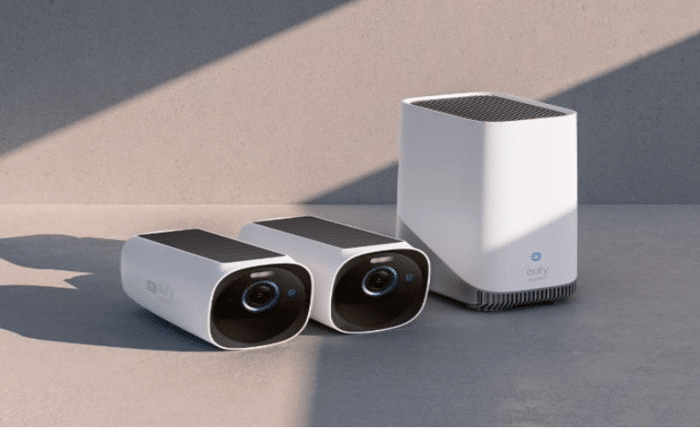
Wireless outdoor security cameras are redefining modern home protection. With flexible installation, real-time remote access, and integration into smart ecosystems, these cameras offer powerful, user-friendly security solutions. Their ease of use and advanced features appeal to tech-savvy homeowners seeking convenience without compromising safety. This article explores why they are becoming the go-to choice for future-focused home security, bringing innovation and peace of mind directly to your doorstep.
Advantages of Wireless Outdoor Cameras
Easy Installation and Flexibility
Wireless cameras eliminate the need for wiring, making them ideal for both renters and homeowners. Installation can be completed with basic tools, often in under an hour. Because there’s no wiring involved, you can easily move or reposition cameras based on changing security needs. This adaptability is particularly beneficial in dynamic environments where surveillance zones may need to shift or expand.
Remote Access and Monitoring
These cameras connect to apps that let you monitor your property from anywhere in real time. Whether you’re at work, on vacation, or simply indoors, you can check live feeds, watch recorded clips, or speak to visitors using two-way audio. This level of connectivity provides peace of mind and allows for quick responses to unusual activity, improving the effectiveness of your home security setup.
Cost-Effectiveness and Scalability
Wireless outdoor cameras reduce upfront installation expenses by eliminating complex wiring. Many models are affordable and allow you to start with just one unit. As your security needs grow, you can add more cameras without overhauling your existing system. This scalability supports budget-conscious homeowners who want long-term flexibility without investing in a large security infrastructure from the start.
How Wireless Technology Improves Camera Performance
High-Quality Video and Stream Stability
Today’s wireless cameras feature full HD or 4K resolution and advanced compression technology. These improvements ensure you receive sharp, detailed footage without overloading your network. Enhanced antennas and dual-band Wi-Fi compatibility maintain consistent performance even in challenging signal zones. These advances help eliminate buffering or dropouts, providing reliable security monitoring 24/7.
Integration with Smart Home Systems
Wireless cameras can seamlessly pair with smart assistants and connected devices. For example, when motion is detected, smart lights can turn on or alarms can sound automatically. These integrations enhance home automation and let you control multiple aspects of security from a central app or voice command. The result is a cohesive, intelligent system that reacts swiftly to potential threats.
Long Battery Life and Power Efficiency
Modern battery-powered cameras are engineered for months of operation on a single charge. Many include energy-saving features like motion-triggered activation and sleep modes when not in use. Solar-powered options extend usability even further. These power-saving strategies allow cameras to remain active in off-grid or hard-to-wire areas, ensuring that performance is not compromised due to power limitations.
Wireless Outdoor Cameras vs. Wired Alternatives
Installation and Setup Process
Wired cameras often require professional installation due to drilling, cabling, and electrical work. This can be costly and time-consuming. Wireless options bypass these hurdles, requiring only basic mounting and app configuration. Homeowners appreciate the ability to install and customize their own systems without the added expense of specialized technicians or lengthy installations.
Performance and Reliability Comparison
Wired systems have long been favored for their stability and uninterrupted power supply. However, wireless camera technology has advanced rapidly, offering reliable connectivity and video clarity. Today’s models feature robust signal handling and power management, closing the reliability gap. For most residential needs, wireless cameras now offer equivalent—if not superior—performance with greater flexibility and convenience.
Security and Privacy Considerations
While wireless systems are sometimes seen as more vulnerable, modern models use strong encryption and two-factor authentication to secure data. Following best practices—such as setting strong passwords, updating firmware regularly, and disabling unused features—further mitigates risks. With proper configuration, wireless cameras can be just as secure as their wired counterparts while offering far greater usability and mobility.
The Future of Wireless Outdoor Cameras
Advancements in AI and Motion Detection
Artificial intelligence is improving camera intelligence with advanced detection capabilities. New systems can differentiate between humans, vehicles, pets, and background motion like tree branches. This dramatically reduces false alarms and improves notification accuracy. As these AI systems evolve, users will benefit from more refined alerts and increased confidence in real-time threat assessment.
Enhanced Security Features and Smart Integrations
Next-generation wireless cameras will incorporate biometrics, such as facial recognition and voice authentication. These tools allow only trusted individuals to access camera systems or trigger smart routines. Integration with smart locks, lighting, and thermostats will further unify home management and security. The result is a more secure, customized, and automated living environment with minimal manual intervention.
Overcoming Connectivity and Power Challenges
As 5G and Wi-Fi 6 technologies become widespread, wireless cameras will gain faster data speeds and lower latency. This will improve streaming quality and responsiveness. On the power side, innovations in solar charging, energy-efficient hardware, and AI-based power optimization will allow cameras to function longer with less maintenance, making them suitable for even the most remote or demanding installations.
Conclusion
Wireless outdoor cameras offer the flexibility, smart features, and accessibility that modern homeowners demand. Their ease of installation, scalable design, and compatibility with smart home systems make them a forward-thinking investment. As connectivity and AI evolve, these devices will become more secure and capable. By adopting wireless outdoor security cameras, you’re not just improving home safety—you’re embracing the future of intelligent, responsive, and convenient home protection.





